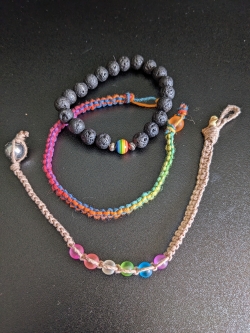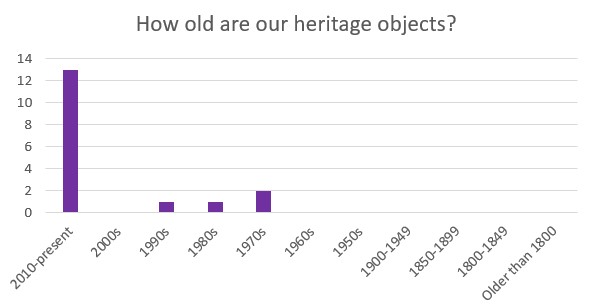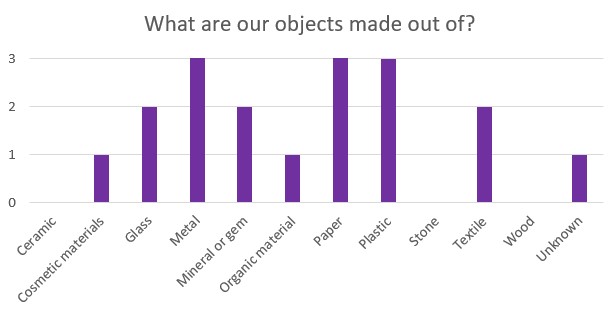Just like historians read primary documents, archaeologists "read" objects (or artifacts) to learn about and share the stories of people. We do that by 1) listening to the stories that descendant communities tell about them (i.e., oral histories) and 2) making observations about the objects themselves.
On this page, you will see the results of Meghan's "reading" of the objects in the exhibit as an archaeologist through bar graphs. By making observations and combining that information, we can begin to paint a picture of our community's collective story.
As you look at the results, consider the following questions:
- Why do you think most of our objects date to the 2010s-present?
- How do you we use our heritage objects? Which is the most common function? Which is the least common? Why do you think this is?
- Which is the most common material used to make our objects? What does this say about our culture and society?
- How did we get our objects? Why do you think gift giving is most common?
- What does this information tell us about our community that is different than in a history book? Is it important? Why or why not?








